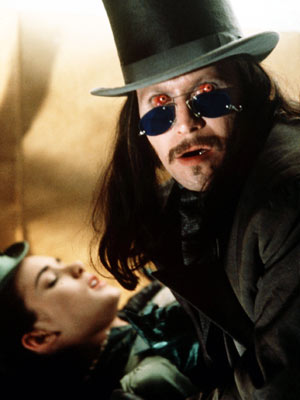
“[B]ut at the instant I saw that the cut had bled a little, and the blood was trickling over my chin. … When the Count saw my face, his eyes blazed with a sort of demoniac fury, and he suddenly mad e a grab at my throat. … ‘Take care,’ he said, ‘take care how you cut yourself. It is more dangerous than you think in this country.’”
Blood is a major moving force throughout Dracula. Blood literally drives the book’s monstrous namesake to do what he does—murdering seamen, seducing women, kidnapping children, among many other atrocities—for without blood, Count Dracula would wither into a brittle old man. The effect blood has not only on Dracula’s, but also other characters’, moods throughout the book makes an interesting statement about blood, aside from its universal connections with life and death.
Evident in scenes like the one above, blood does not put people, fictional and nonfictional, exactly at ease. There is nothing ever calming, or at the very least serene, about blood. Even when Lucy is rejuvenated with blood transfusions, she is either vibrant with new blood, or at death’s door without it. Here, the sight of blood draws the baser instincts out of Dracula, causing his “demoniac fury” before he could even taste Jonathan’s blood. Similarly, Renfield turns almost pentacostal when he cuts Seward’s wrist for blood.
From blood comes the many connotations we associate with the organic liquid today—life/death, passion, kin, etc. But what about blood itself causes us to make those associations so readily? Bram Stoker seems to attempt answering this with the many encounters and instances with blood and his characters. Blood is a mover and shaker, never letting characters rest in its presence (or its absence). Blood, after all, ever rests in our veins, and the characters’ reactions towards blood seem to reflect blood’s own restlessness.


